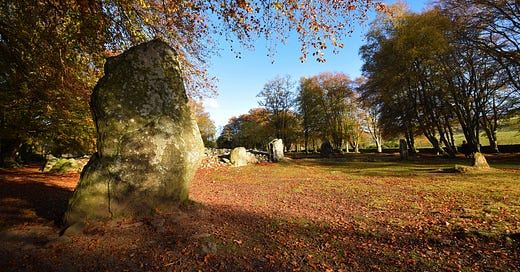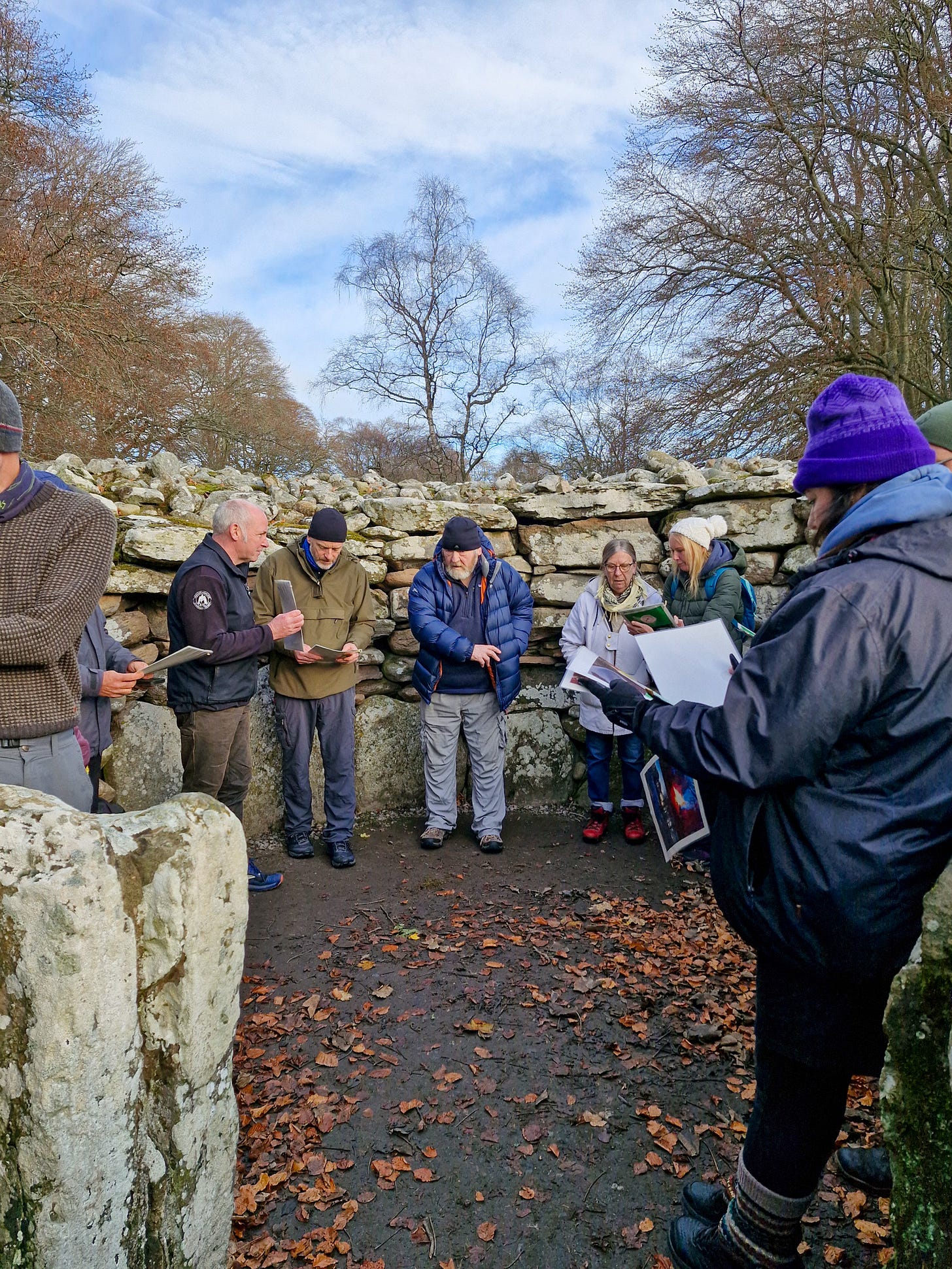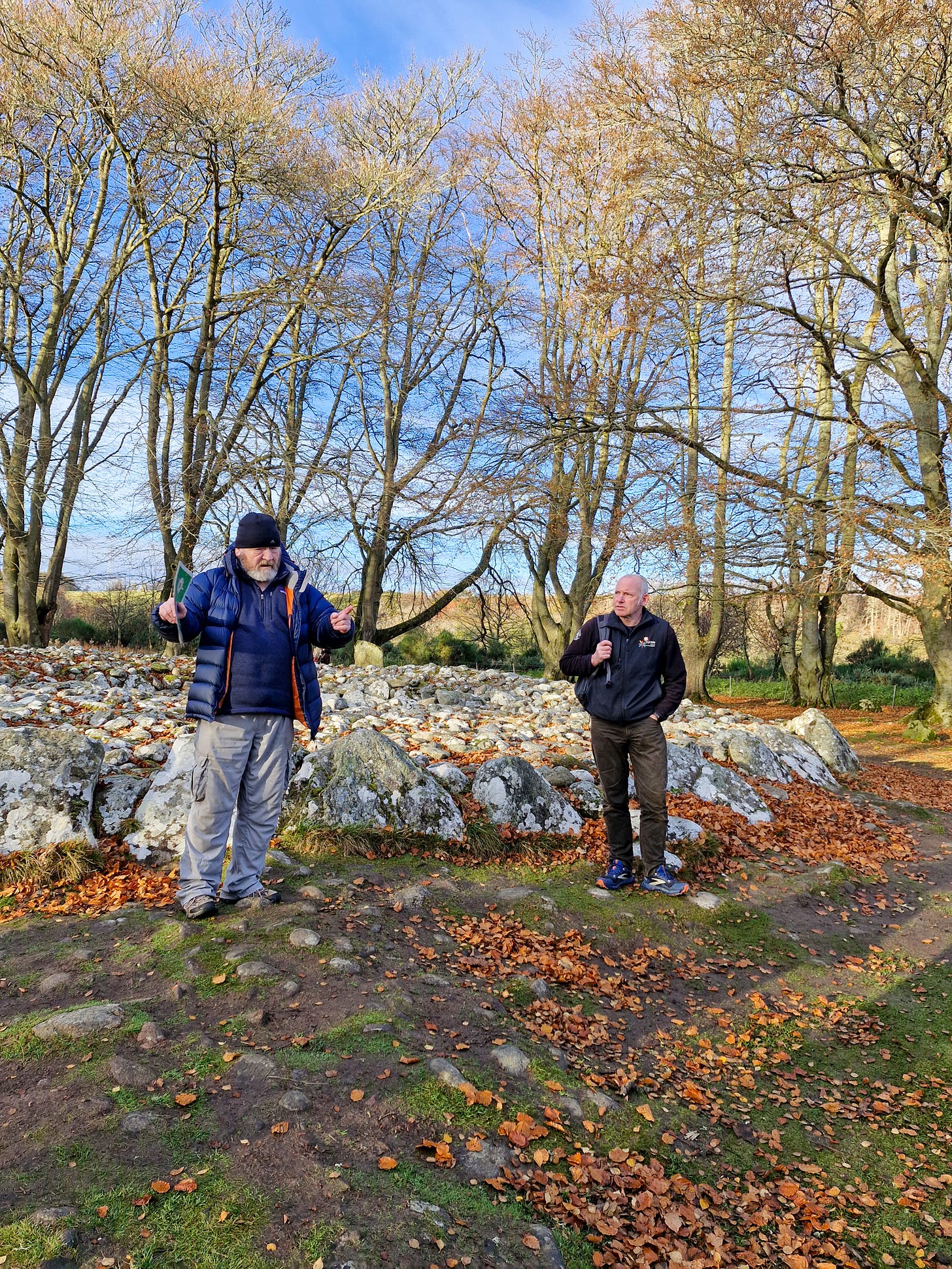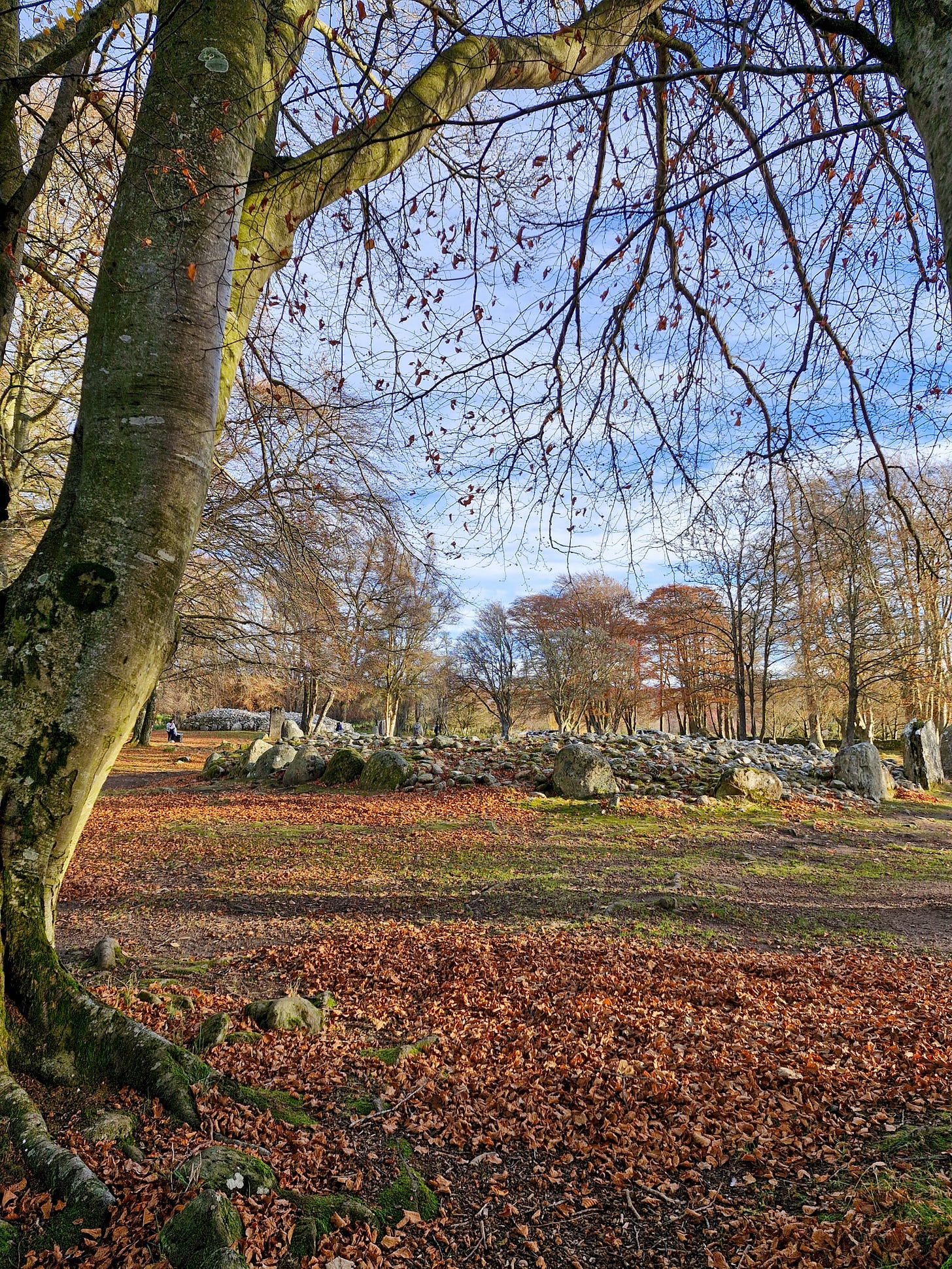Sacred Stones and Star Paths
John looks at decoding Clava Cains a 4,000 year old site, just outside Inverness
Clava Cairns is one of Scotland’s most remarkable prehistoric sites, a place that rewards those who visit with its quiet mystery and enduring presence.
For over two decades, I have walked the sacred ground of Clava Cairns, guiding others through its weathered stones and timeworn paths. Every visit uncovers something new, another layer to this enigmatic site that pre-dates civilisation as we know it. And yet, despite all that has been studied, so much remains a mystery.
These ancient cairns, resting quietly within a peaceful woodland just outside Inverness, continue to defy full explanation, their purpose and origins only partially illuminated by modern archaeology.
Clava Cairns is a portal into the minds of those who lived over 4,000 years ago. The builders of these cairns understood their environment very well. They shaped stones into passage graves, encircling them with standing stones that appear to align with celestial events. It is no accident that the setting sun at midwinter illuminates the passageways of the outer cairns. It suggests a society deeply attuned to the turning of the heavens.
Over the years, I have come to appreciate how these monuments bridge the scientific and the spiritual. The cairns speak of a world where astronomy and ritual were inseparable and the dead were laid to rest in structures built with astonishing precision.
The worn cup marks on some of the stones hint at even older traditions, perhaps from an earlier sacred site whose purpose has long since faded from memory.
The surrounding landscape, too, holds secrets. At Milton of Clava, a short distance away, stands the remains of a medieval chapel, which demonstrates a continued reverence to this site, long after the Bronze Age builders had passed.
What fascinates me most about Clava Cairns is how it resists being neatly categorised. Was it purely a burial site? A ceremonial space? A place of astronomical observation? The answer is likely all of these and more.
The people who built these monuments left no written records, only the stones themselves as silent witnesses to their beliefs, their rituals, and their relationship with the world around them.
It is up to us to try to decifer the message left in these stones.
Standing within the ring of stones, I often wonder about the individuals who once walked this same ground. The sheer scale of the construction speaks of a communal undertaking, but the cairns were not, we believe, made for the many but for the few - perhaps leaders, spiritual figures, or those whose status warranted such extraordinary effort. And yet, we will never know their names, never hear their voices. All that remains are the stones and the questions they inspire.
Late last year, esteemed Astro-Archaeologist Douglas Scott accompanied me on one of my guided walks at Clava Cairns. Despite all my years exploring the site, Douglas was able to provide new insights into its history, ideas that had never crossed my mind before.
His expertise in how ancient societies integrated celestial movements into their architecture brought fresh perspectives to the significance of the cairns. The possibility that these stones were not just built with an awareness of the sun and stars, but were designed to interact with them in profound cultural and spiritual ways, added another layer of meaning to this remarkable place.
Douglas’ ability to blend scientific knowledge with an open-minded curiosity about the past makes him a fascinating person to learn from, and his passion for uncovering lost astronomical traditions is contagious.
I’m delighted to announce that Douglas has agreed to join us for a winter talk this year, and share some of his knowledge with our followers.
I’d like to invite you to join me online on the evening of 20th March - where Douglas and I will explore Clava Cairns in greater depth.
We’ll take a closer look at the site’s history, folklore, and astronomical significance, revealing both what we know and the many mysteries that remain unanswered.
Why not join us? Discover the science, stories, and celestial secrets of Clava Cairns and see these ancient monuments through new eyes.
We ask for donations for this event to help with our work, which goes towards education about and protection of the nature and heritage of the Highlands. Please give what you feel you can afford.
John Orr is the High Life Highland Countryside Ranger for Inverness. Throughout his career spanning 30 years, John has demonstrated a deep commitment to environmental stewardship and education. His work has not only contributed to the preservation of Scotland's natural heritage but has also inspired many individuals to engage with and appreciate the natural world around them.
📢 Join us for an online talk: The Magic & Mystery of Clava Cairns! ✨
With John Orr and Douglas Scott
📅 Thursday, March 20th
⏰ 7:00 – 8:00 pm GMT
📍 Online via Microsoft Teams
Step back in time and uncover the secrets of Clava Cairns, one of Scotland’s most fascinating prehistoric sites. 🔥🌙 Learn about its history, myths, and possible connections to ancient rituals, all from the comfort of home!
👉 Give what you can* to support our work in education and conservation.
🔗 Book your spot now!
🔎 Discover the ancient magic of the Highlands!
* Please be aware that there is a minimum fee of £1 required to book on via Eventbrite. This does not go to the Ranger Service but is to cover Eventbrite Fees.
Whether you can stand among the stones yourself or join us online, the experience of exploring its history, folklore, and scientific significance offers us a profound connection to the past.











Many thanks for that John. I’ve always been fascinated by this place and visit regularly on my bike rides. I went there once with my friend, the actor Sam Heughan who achieved a certain amount of fame in the series Outlander. As we stood beside one of the standing stones a tour bus arrived full of Outlander fans. They just couldn’t believe it when they saw Sam there. They really thought he had just stepped through from an earlier century.
This place sounds fascinating, I’ll be visiting next time I’m in Inverness.